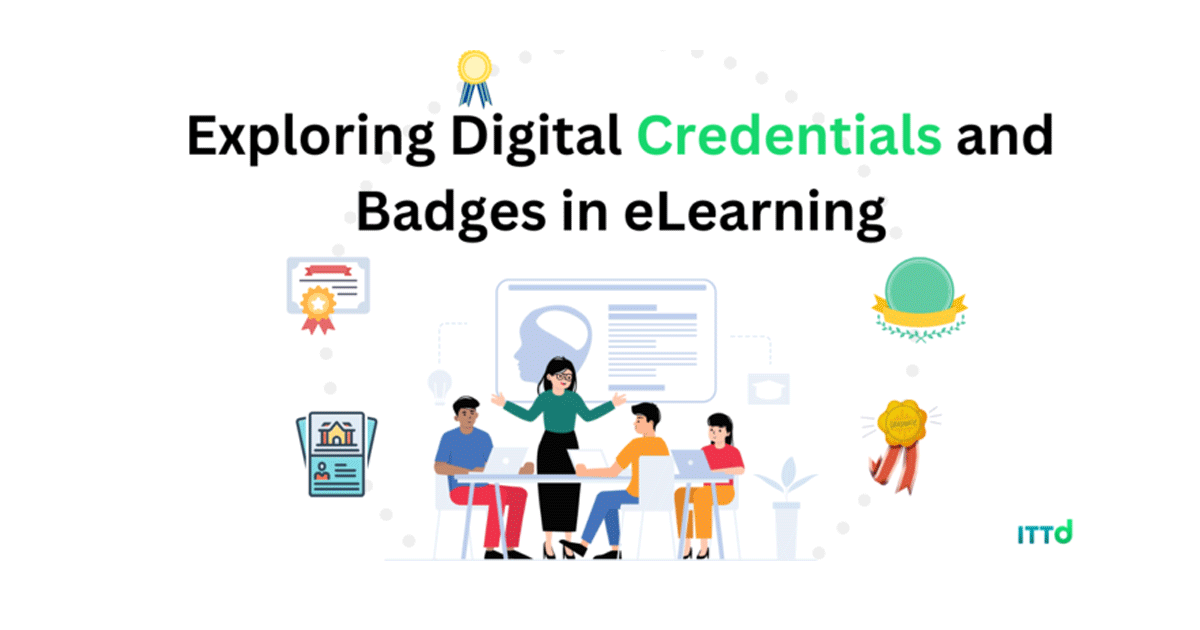In this digital age, where traditional paper certificates are giving way to virtual representations of achievement, the concept of digital credentials and badges has gained significant prominence in eLearning. These digital tokens of accomplishment offer learners and professionals a versatile means to validate their skills, knowledge, and experiences.
In this exploration of digital credentials and badges in eLearning, we'll delve into what they are, how they function, why they are essential, and how to effectively utilize them to propel your educational and career pursuits to new heights.
What are Digital Credentials and Badges?
Digital credentials and badges are a form of online certification that represent an individual's accomplishments, skills, and qualifications. Unlike traditional paper certificates, these digital representations are versatile, portable, and can be easily shared and verified online. They serve as visual symbols of competence and proficiency, making them a valuable tool in the eLearning ecosystem.
Types of Digital Credentials and Badges:
- Course Completion Badges: These badges are typically awarded upon successfully completing a specific course or module.
- Skill Badges: Issued to individuals who demonstrate proficiency in specific skills, such as programming languages, project management, or graphic design.
- Certification Badges: These represent official certifications earned in a particular field, such as IT certifications, language proficiency, or compliance training.
- Experience Badges: Acknowledge real-world experience and accomplishments, such as internships, volunteer work, or research projects.
How Digital Credentials and Badges Work?
The process of earning and using digital credentials and badges in eLearning is straightforward:
- Enrollment: Students enroll in an online course or program, which may offer badges as part of the learning experience.
- Skill Assessment: As learners progress through the coursework, they complete assessments or projects to demonstrate their skills and knowledge.
- Badge Issuance: When a student successfully meets the criteria for a specific badge, the issuing authority (usually the educational institution or training provider) awards the badge electronically.
- Badge Storage: The badge is stored in a digital backpack, a secure online repository, or a learning platform that the student has access to.
- Sharing and Display: Badge recipients can showcase their achievements on social media, professional networking sites, resumes, or personal websites. These badges are often clickable, allowing others to verify their authenticity.
Why are Digital Credentials and Badges Important?
- Granular Validation: Traditional diplomas and certificates may not capture the breadth and depth of a person's skills. Digital credentials and badges break down accomplishments into specific competencies, providing a more detailed view of a learner's capabilities.
- Accessibility: Digital credentials are easily accessible and shareable, removing geographical and logistical barriers. Learners can share their achievements with potential employers, peers, or educational institutions worldwide.
- Verification and Trust: The digital nature of these credentials allows for real-time verification, reducing the risk of fraudulent claims. Employers and institutions can easily confirm the authenticity of a badge by clicking on it.
- Motivation: Badges serve as motivators for learners, offering a sense of accomplishment and recognition for their efforts. The pursuit of badges can encourage continuous learning and skill development.
- Career Advancement: In a competitive job market, digital credentials and badges can give individuals a competitive edge. Employers value candidates who can demonstrate their skills and qualifications through verifiable digital badges.
How to Use Digital Credentials and Badges Effectively?
To make the most of digital credentials and badges in eLearning:
- Select Reputable Providers: Enroll in courses or programs offered by recognized and accredited institutions to ensure the quality and credibility of the badges you earn.
- Curate Your Collection: Choose badges that align with your career goals and aspirations. Highlight the most relevant and impressive badges on your professional profiles.
- Regularly Update: As you acquire new skills or complete additional courses, keep your collection of digital credentials up to date to reflect your evolving expertise.
- Share Strategically: Share your badges strategically, especially on professional networking sites like LinkedIn. Explain the significance of each badge and how it contributes to your qualifications.
- Network and Collaborate: Engage with peers and professionals in your field who also use digital badges. This can lead to networking opportunities and collaborations based on shared skills and interests.
- Leverage in Interviews: During job interviews, use your digital badges to demonstrate your qualifications and competencies. Discuss how your achievements align with the requirements of the role.
Conclusion:
These digital tokens have revolutionized the way we validate and showcase skills and knowledge. As we've explored the world of digital credentials and badges, we've seen how they provide granular validation, accessibility, trust, motivation, and career advantages. By strategically curating and sharing these badges, learners and professionals alike can open doors to new educational and career opportunities in our increasingly digital world. Embrace this modern approach to recognition and validation, and watch as your journey of growth and achievement in eLearning reaches new heights.
We'd love to hear from you!



